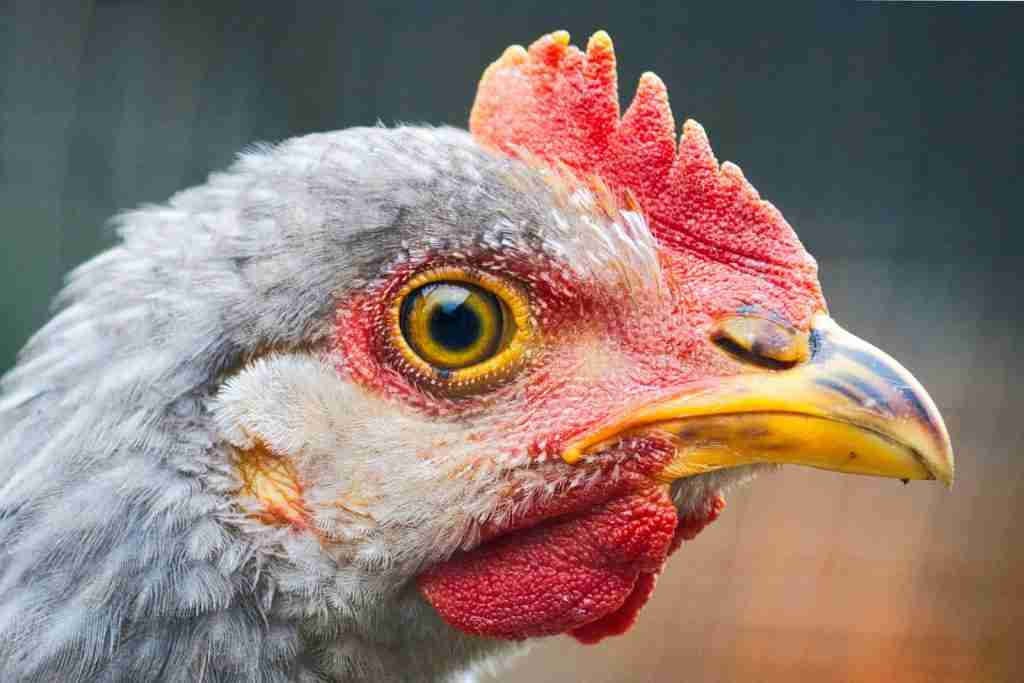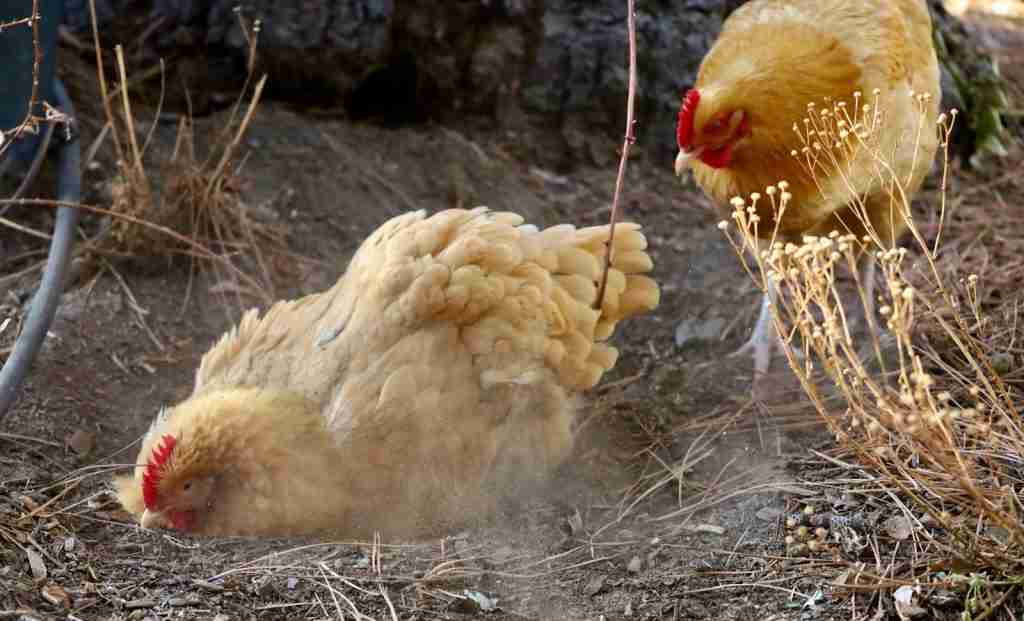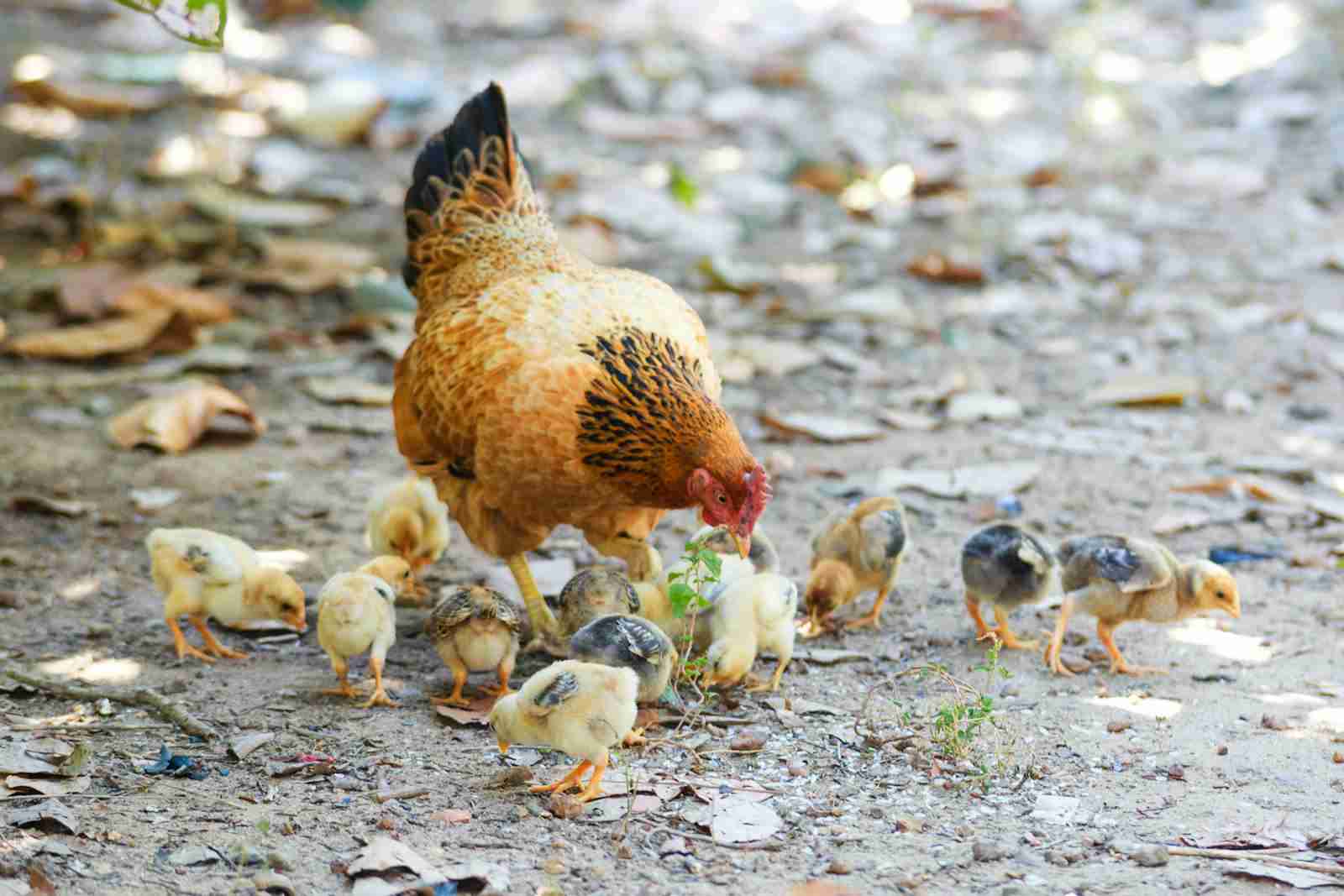26 Fun Facts About Chicken You Need to Know ASAP
1. Chickens can remember over 100 different faces.
It’s quite fascinating to learn that chickens have the ability to remember and recognize over 100 different faces, both of their chicken friends and of humans. This remarkable memory helps them maintain complex social structures within their flocks.
Such an impressive cognitive ability suggests that chickens are far more intelligent than many people might assume. Their social interactions and hierarchies are complex, relying on this powerful memory to navigate their social worlds.
2. Chickens dream while they sleep.
Like humans, chickens experience REM (Rapid Eye Movement) sleep, which means they also dream. Observing a sleeping chicken, you might notice phases where their eyes move rapidly under their eyelids.
This discovery adds an intriguing layer to our understanding of these animals. It suggests a depth to their consciousness and cognitive abilities, hinting at a rich inner life we’re only just beginning to appreciate.
3. Chickens have a sense of time and can anticipate future events.
Studies have shown that chickens possess a sense of time, allowing them to anticipate future events. This ability is evident in their daily routines and how they respond to regular feeding times.
This sense of time further underscores the cognitive complexities of chickens. It enables them to adapt to and anticipate changes in their environment, showcasing their intelligence and adaptability.
4. Chickens have been domesticated for around 8,000 years.
Chickens have played a role in human societies for millennia, with evidence suggesting their domestication dates back at least 8,000 years. Initially raised for cockfighting rather than for food, their role in human life has evolved significantly over time.
Today, chickens are a staple in diets around the world, providing meat and eggs. Their long history with humans has made them one of the most ubiquitous domestic animals on the planet.
5. A chicken once survived without its head for 18 months.
In a bizarre turn of events, a chicken named Mike lived for 18 months after his head was chopped off. This strange tale occurred in the 1940s and has since become a part of chicken lore.
Mike’s survival was due to a precise cut that left most of his brain stem intact, allowing him to live for an extended period without a head. His story is often cited as an example of the incredible resilience of chickens.
6. What are the health benefits of eating chicken?
Chicken is a lean protein source, providing essential vitamins and minerals like B vitamins, iron, and zinc. It can help with weight management and promote heart health.
7. Chickens can communicate with more than 24 vocalizations.
Chickens are not just clucking aimlessly; they have over 24 vocalizations used to communicate a wide range of information, from alerting others to the presence of food to signaling danger.
This complex vocal communication system highlights their social nature and cognitive abilities. Each sound has a specific meaning, enabling chickens to convey messages and maintain social cohesion within the flock.
8. There are more chickens on Earth than any other bird species.

With billions of individuals worldwide, chickens outnumber every other species of bird on the planet. This is largely due to their importance to human agriculture and diet.
This fun facts about Chicken highlights not only their popularity but also their significance in human culture and economy. Their sheer numbers are a reflection of their role as a key food source globally.
9. The world’s oldest known chicken lived to be 16 years old.
While most chickens live much shorter lives, especially those raised for food, the world’s oldest chicken reached the ripe old age of 16. This exceptional age showcases the potential longevity of these birds under the right care.
The longevity of this particular chicken serves as a testament to the robustness and resilience of the species, defying common perceptions about their fragility.
10. The first bird to travel in space was a chicken.
In a somewhat quirky footnote to space exploration history, the first bird to ever travel in space was a chicken egg. This occurred during a 1961 NASA mission, marking a unique moment in the annals of space travel.
This event underscores the often-unexpected roles chickens have played in human history. From contributing to scientific research to becoming part of significant milestones like space exploration, chickens have been there.
11. Chickens can learn by watching the actions of other chickens.
Chickens are capable of observational learning, meaning they can watch another chicken perform a task and then replicate that behavior themselves. This learning method is a sign of their intelligence and social learning capabilities.
Whether it’s finding food or avoiding predators, the ability to learn from others is crucial for their survival. This Chicken facts piece demonstrates their sophisticated social behaviors and adaptability.
12. Chickens can see more colors than humans.

Chickens have remarkable vision and can perceive a broader spectrum of colors than humans can. This visual acuity helps them detect food and predators more effectively.
Their ability to see ultraviolet light adds an extra dimension to their world, enhancing their interaction with their environment. It’s a fascinating aspect of their biology, showing how their perception differs from ours.
13. Chickens can run up to 9 miles per hour.
It’s quite surprising to many that chickens are capable of reaching speeds up to 9 miles per hour when they need to escape danger or simply when they’re in a hurry. This fact showcases their agility and ability to fend for themselves.
This speed allows them to evade predators in some situations, providing a fascinating glimpse into their survival strategies. Their quickness is just one of the many adaptations that have enabled chickens to thrive in a variety of environments.
14. Is chicken a healthy food choice?
Yes, chicken is generally considered healthy, especially when prepared without excess fat or breading. Choose lean cuts like chicken breast for the most nutritional value.
15. Chickens have been sent into space.
In the annals of space exploration, chickens have also played a part. They have been among the various organisms sent into space to study the effects of zero gravity on living beings. This fact highlights the wide-ranging impact chickens have had on scientific research.
These missions have provided valuable data on how living organisms can survive and behave in the unique conditions of space, demonstrating chickens’ contributions beyond just agriculture.
16. A chicken’s comb has a purpose beyond decoration.

The comb, often seen as merely decorative, plays a crucial role in a chicken’s life. It helps in thermoregulation, allowing chickens to release heat on hot days. This feature is vital for their survival and comfort.
Additionally, the size and color of the comb can be a sign of health and vitality, making it an important aspect of chicken behavior and social dynamics. It’s a prime example of how every part of the chicken has a functional role.
17. The largest chicken egg ever recorded weighed over 12 ounces.
Record-breaking in its size, the largest chicken egg ever recorded tipped the scales at over 12 ounces. This extraordinary egg showcases the range of sizes chicken eggs can achieve under certain conditions.
This fact not only astonishes but also illustrates the biological diversity within chicken breeds, with some capable of producing significantly larger eggs than others.
18. Chickens can live without a head for a short period.
One of the more macabre facts about Chicken is their ability to survive for a short time without their head, due to their brainstem controlling many basic life functions. This phenomenon has been observed in rare instances, contributing to some of the more unusual stories in chicken lore.
This ability, while not common, speaks to the resilience and basic biological design of chickens, allowing them to continue some bodily functions even after decapitation.
19. There are over 500 breeds of chickens.
With more than 500 breeds, chickens boast an incredible variety of sizes, colors, and characteristics. This diversity allows them to be raised for different purposes, from egg production to meat, or even as pets.
This wide array of breeds reflects the adaptability and widespread domestication of chickens across the world, each breed developed to meet specific human needs or environmental conditions.
20. Chickens use dust baths to stay clean.

Contrary to what one might think, chickens maintain their hygiene through dust baths. This behavior involves rolling in dirt to protect their feathers from parasites and maintain their skin health.
This natural instinct is an essential part of their grooming process, showcasing an interesting aspect of their behavior that keeps them healthy and comfortable without needing water baths.
21. Chickens have been depicted in human art for centuries.
Chickens have not only been companions and food sources for humans but have also featured in our art and stories for centuries. They are symbols of fertility, bravery, and motherhood in various cultures.
This enduring presence in human culture highlights their importance and the deep connections humans have formed with chickens throughout history, celebrating their role in society beyond mere agricultural value.
22. What does the nutrition label on chicken tell me?
The nutrition label provides information on calories, fat (including saturated fat), cholesterol, sodium, protein, and important vitamins and minerals per serving.
23. A chicken’s vision is better than humans in some aspects.
Chickens have remarkable eyesight; their vision surpasses human capabilities in detecting movement and subtle shades of color, especially in the ultraviolet spectrum. This keen vision helps them find food and avoid predators.
Their ability to see ultraviolet light gives them a view of the world that is vastly different from our own, illustrating the fascinating ways in which evolution has tailored species to their specific environmental needs.
24. The chicken is the closest living relative to the Tyrannosaurus Rex.

Research has shown that the chicken shares more genetic similarities with the T-Rex than any other living animal. This connection bridges a vast period, linking the modern farmyard bird to the ancient world of dinosaurs.
Understanding this genetic lineage not only fascinates but also provides insights into evolutionary processes. It’s a compelling example of how life on Earth is interconnected across eons.
25. Chickens can form strong social bonds with humans.
Chickens are capable of forming deep and lasting bonds with humans, recognizing individuals and showing affection. This emotional capacity challenges common misconceptions about their intelligence and emotional depth.
Such Chicken fun facts emphasize the potential for chickens to be interactive and responsive pets, capable of companionship and social interaction, much like more traditionally recognized pets.
26. Chickens can taste saltiness but not sweetness.
Chickens have a unique taste system; they can detect salt but have limited ability to taste sweetness. This taste profile affects their dietary preferences and the types of food they find appealing.
This distinction in taste perception influences how they forage for food and what they choose to eat, highlighting the adaptability of their senses to their dietary needs.
FAQs
Food scientist Robert C. Baker invented the modern chicken nugget in the 1950s at Cornell University.
Buffalo sauce originated in Buffalo, New York, at the Anchor Bar in 1964. It’s traditionally a mix of hot sauce and melted butter.
Chicken tenders are a specific cut of meat from the underside of the breast. They are known for being particularly tender.
Chicken nuggets are made from ground chicken meat, often mixed with skin, fat, and seasonings. They are then breaded or battered and deep-fried.
National Chicken Wing Day is celebrated annually on July 29th.







